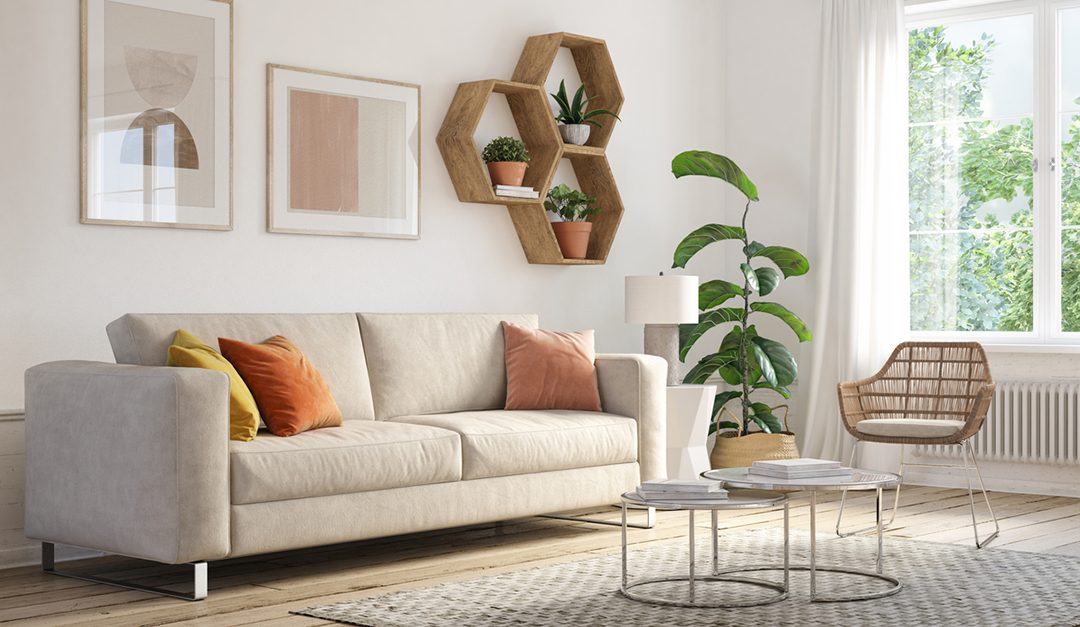Are you considering either building a modular home or buying one that's already constructed? You are not alone. Many folks are turning to modular homes as another housing choice. Cost-efficient and headache-free, a modular home can be a great option for homeowners who dream of owning their very own custom home but don't want to go through the pains of managing architects and construction workers.
Modular homes are a great alternative for anyone who seeks a more manageable project. Here are some interesting facts about this type of home so you know whether or not they're worth looking into for your newest real estate purchase:
What Is a Modular Home?
A modular home has been built in an indoor factory setting and then the finished project is covered and transported to its new, permanent location, where a builder will fully assemble the home once it arrives.
Modular homes are not mobile homes, they are just homes that have been built off the current site it now inhabits; also known as factory-built or prefab homes.
How Do Modular Homes Different From Ones Built On-Site?
As prefabs are built indoors, they can be put together in a matter of weeks, as opposed to months like traditional homes. The length of time required for a stick-built home usually comes down to poor weather conditions. This is one of the defining reasons why a building project can take longer than expected.
Modular homes must follow specific rules, guidelines and building codes that typically don't apply to traditional on-site homes.
Ideally, if you're looking to get your own modular home, you should be shopping around as not all things are going to be built the same. It may take you some time to find a modular home suitable for you and your family. There can be a huge disparity in things like quality and price.
Just like purchasing literally anything throughout your life (especially when you're spending a big chunk of money), you should always be doing your research. One modular home company can be better than the next, just like one custom home builder might be better than the competition. It's essential to do your due diligence on the modular company you're considering using like you would with any other.
Things Worth Knowing About Prefab Housing
Modular homes are moved once complete. As mentioned earlier, modular homes are typically built in a factory somewhere and will remain there until they have been fully built. They are then moved to the plot of land which they'll most likely spend the rest of their days on.
Of course, they are moved in parts and will need to be fully assembled before anyone can inhabit it. You will also need to complete all the finishes. The most grueling part of the new construction process will already be completed, though—a big plus!
It's vital to note that financing for modular homes is the same as traditional homes. Many people think that loans on this building type are different, perhaps even more expensive than traditional housing, but this isn't the case. The home loans available are the same as the site-built homes, which you're no doubt living in as you're reading through these interesting facts.
You can get traditional mortgage financing if you're buying from a modular home builder, or you can get your own construction loan if you plan to custom build your own property. Many folks will get a land loan if they don't plan on starting their construction project right away.
Just like any other housing project, you'll be expected to have a solid down payment and an excellent credit score. Lenders will want to know you're a solid credit risk.
Modular Homes Are No Longer Stigmatized
Years ago, modular homes were not looked upon favorably. They were labeled as being inferior construction in the building community, along with real estate agents who would sell these homes. It was not uncommon to see construction materials that were inferior to their stick-built counterparts. There was minimal variety in construction and it was easy to identify a modular home on many occasions because many of them had shallow-pitched roofs. There was very little creativity involved.
Today, this is no longer the case. Modular homes are looked at much differently. In fact, some modular homes are better than traditional new construction.
Modular Homes Do Not Depreciate in Value
Modular homes are treated as any real estate you can purchase on the market, meaning that they don't depreciate in value just because they are modular homes. Of course, they'll go up and down in price depending on the state of the market just as a traditional property would. And they're also seen as a permanent structure and viewed as a normal manufactured home.
Modular Homes Can Be Customized to Your Liking
Modular homes can be customized to your liking, depending on what you need in terms of bedrooms and bathrooms, as well as what you want aesthetically. All of these can be changed to how you like it—at a price of course. Because of this, no two homes are the same. Many modular homes are now unique by design, having been put together with their owner's imagination. With more people taking advantage of modular homes on today's market, you're bound to have a one-of-a-kind look and not the cookie cutter designs of years past.
Taxes on Modular Homes Are the Same
One of the main misconceptions of prefab housing is that they're taxed differently because many people don't consider them as the same kind of property. As discussed previously, they're seen as the same as any other traditional real estate. This means that, despite what people may think, they are taxed the same. Don't expect to see any discounts on the taxes you pay.
Buying a modular home today is a viable option that's worth considering. When doing your research, remember that today's modular homes are much different from those built in previous decades. Like any other house, plan on doing a home inspection with a qualified professional to ensure there are no significant issues.
 Bill Gassett is a nationally recognized real estate leader who has been helping people buy and sell MetroWest Massachusetts real estate for the past 33 years. He has been one of the top RE/MAX REALTORS® in New England for the past decade. Gassett works for RE/MAX Executive Realty in Hopkinton, Massachusetts. In 2018, he was the No. 1 RE/MAX real estate agent in Massachusetts.
Bill Gassett is a nationally recognized real estate leader who has been helping people buy and sell MetroWest Massachusetts real estate for the past 33 years. He has been one of the top RE/MAX REALTORS® in New England for the past decade. Gassett works for RE/MAX Executive Realty in Hopkinton, Massachusetts. In 2018, he was the No. 1 RE/MAX real estate agent in Massachusetts.




